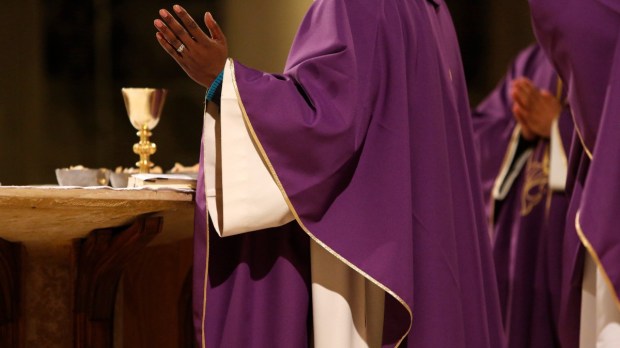Throughout the liturgical year, saints are honored on specific days and typically receive mention by name at daily Masses. The priest may wear red vestments if the saint being honored is a martyr.
However, during Lent most feast days that honor saints disappear from the calendar, and the saint might not even be mentioned at Mass. That’s because most saints’ feast days are what are known as optional memorials, which have a lower priority than the days of Lent.
The General Instruction of the Roman Missal explains this rule for Lent:
[O]n the weekdays of Lent, except Ash Wednesday and during Holy Week, the Mass texts for the current liturgical day are used; but the Collect may be taken from a Memorial which happens to be inscribed in the General Calendar for that day, except on Ash Wednesday and during Holy Week.
GIRM 355
What this means is that the priest wears violet on nearly every Lenten weekday and only the opening prayer may mention the saint’s feast day, but even that is optional.
There are a few exceptions for feasts that are celebrated at the higher liturgical rank of solemnity, such as the Solemnity of St. Joseph on March 19 and the Solemnity of the Annunciation of the Lord on March 25. In the Western Church, the Solemnity of the Annunciation is moved to the first open day following the Octave of Easter if March 25 happens to fall during Holy Week, as it does this year. It will be celebrated on Monday, April 8.
Technically even St. Patrick’s Day is an optional memorial, though in some places (such as Ireland) it has the rank of a solemnity and is observed as such.
Basically, it takes a little more intention to observe or honor saints during Lent, as the penitential season takes center stage, calling us to a life of prayer, fasting and almsgiving.



